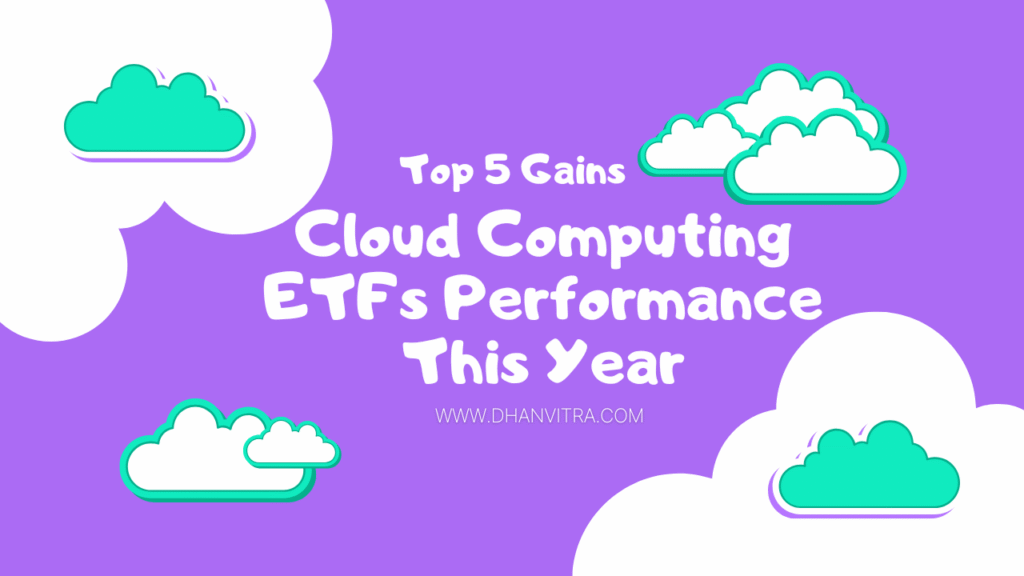
Welcome to Dhanvitra, your trusted space for smart financial insights and investment strategies. In today’s rapidly evolving world, Artificial Intelligence (AI) is no longer a futuristic concept—it’s shaping industries, driving innovation, and transforming the way businesses operate. But here’s something most investors overlook: AI isn’t just about software and applications; it needs a powerful backbone— How to Invest in AI Infrastructure Stocks?.
This includes the semiconductors that power machine learning, the cloud platforms that store massive datasets, and the data centers that enable lightning-fast computing. As demand for AI technology skyrockets, companies building this infrastructure are seeing explosive growth.
In this blog, we’ll simplify the process and guide you through 5 easy steps to invest in AI infrastructure stocks. Whether you’re a beginner looking to dip your toes into the market or an experienced investor exploring new opportunities, this article will help you understand the potential, minimize risks, and make informed decisions.
Table of Contents
What are AI infrastructure stocks?
To understand AI infrastructure stocks, think about what happens behind the scenes when you use a smart assistant like Siri, ask ChatGPT a question, or watch Netflix’s personalized recommendations. None of this magic happens without a solid foundation—servers, chips, cloud networks, and data pipelines working tirelessly in the background. These are the pillars of AI infrastructure.
AI infrastructure stocks belong to companies that create and manage these essential systems. We’re talking about semiconductor manufacturers that design powerful chips, cloud computing providers that offer scalable storage, and data center operators that handle massive amounts of information. Without them, AI software is like a sports car with no fuel—it looks impressive but can’t go anywhere.
Investing in these stocks means you’re betting on the companies that make AI possible, not just the flashy apps and algorithms. It’s like owning shares in the builders of highways rather than just the cars—they may not always be visible, but they’re essential.
How to Invest in AI Infrastructure Stocks
The AI market isn’t just growing—it’s exploding. And here’s the secret: while apps and AI tools come and go, the infrastructure that supports them keeps expanding. Every new AI company, whether in healthcare, finance, or robotics, relies on the same backbone.
For global investors, AI infrastructure is like investing in electricity during the Industrial Revolution. Semiconductor giants like NVIDIA and AMD, cloud leaders like Amazon Web Services, and data center operators like Equinix are all fueling this digital gold rush.
What makes this investment attractive is its resilience. Even if one AI app fails, infrastructure companies continue to thrive because the demand for processing power, storage, and connectivity continues to rise. That’s why smart investors see AI infrastructure as a long-term wealth creation opportunity, not just a trend.
Step 1: Learn the Basics of AI Infrastructure
Before putting your hard-earned money into AI stocks, you need to know what you’re actually investing in. Think of this as learning the rules of the game before stepping onto the field. AI infrastructure is broader than most people realize.
At the core, it includes semiconductors—the “brains” that allow AI systems to process enormous amounts of data. Then you have cloud computing, which provides virtual spaces for companies to run AI models without building expensive hardware themselves. Add to this the data centers, which serve as warehouses of digital information, and you have the backbone of artificial intelligence.
What makes infrastructure different from AI applications is its durability. Applications may trend for a season, but infrastructure forms the permanent ground they stand on. Once you understand these basics, you’ll be able to spot which companies are genuinely providing long-term value and which ones are just chasing hype.
Step 2: Research Potential Stocks
Now that you know what AI infrastructure is, the next step is research—because investing blindly is like sailing without a compass. You’ll want to explore companies that are leading this revolution. Look at their track records, financial reports, market share, and future outlook.
Semiconductor leaders like NVIDIA, Intel, and AMD are obvious names, but don’t stop there. Then there are lesser-known players—data center operators, 5G network providers, and companies creating AI-specific hardware—that could become tomorrow’s winners.
Global investors should keep in mind that AI infrastructure isn’t limited to Silicon Valley. Countries like Taiwan, South Korea, and even parts of Europe are producing world-class semiconductor and hardware companies. By casting your net wide, you give yourself a chance to catch the next big breakout.
When researching, focus not only on profits today but also on innovation and adaptability. Companies that keep reinventing themselves to meet AI’s ever-growing demands are the ones that will stand strong a decade from now.
Step 3: Evaluate Market Trends
The final step in this part of the journey is understanding where the market is heading. AI is no longer confined to tech labs—it’s infiltrating everything from banking and transportation to farming and retail. Evaluating market trends helps you see where infrastructure demand will grow fastest.
One key trend is the surge in data consumption. As AI models become larger and more sophisticated, they require more powerful chips, more cloud storage, and more high-speed internet. This means that semiconductor and data center companies are set to enjoy sustained demand.
Another trend is government investment. Countries across the globe are pouring billions into AI to remain competitive. This translates into more contracts and opportunities for infrastructure companies. Whether it’s the U.S., China, or the European Union, the message is clear: AI is a priority, and the infrastructure players benefit first.
Finally, don’t overlook competition and disruption. Just as new players can rise, established ones can stumble if they fail to innovate. Keeping your eyes on market trends ensures you invest not just in what’s booming now but in what will still be thriving five or ten years from today.
Step 4: Diversify Your Investments
When it comes to investing in AI infrastructure stocks, putting all your money into a single company can feel tempting—especially if you believe in its vision. But here’s the truth: even the strongest companies face risks. Market shifts, new competitors, or sudden regulations can shake things up overnight. That’s why diversification is your safety net.
Think of it like planting different kinds of crops. If one fails, the others still grow and feed you. In investing, diversification means spreading your money across different segments of AI infrastructure. For instance, you might invest in a semiconductor company powering AI chips, a cloud computing provider hosting AI models, and a data center firm managing storage and processing.
For those who don’t want to pick individual stocks, there are AI-focused ETFs (Exchange-Traded Funds) that automatically diversify your money across multiple AI infrastructure players. It’s a smart way to gain exposure without the headache of stock-picking. The bottom line is this: the more balanced your portfolio, the smoother your long-term growth will be.
Step 5: Start Small and Scale Up
If you’re new to AI stock investing, the smartest move isn’t going “all in.” Instead, think of it as dipping your toes in before diving deep. Start with a modest amount—something you’re comfortable investing without losing sleep over. This gives you room to learn how the market behaves without risking too much.
As you grow more confident, you can gradually scale up your investments. Maybe you start with one or two companies, track their performance, and then add more as your knowledge expands. This approach helps you build resilience. Instead of being hit hard by short-term market swings, you’ll grow steadily alongside your investments.
Another key is setting clear goals. If your focus is on the future, it’s better to stay patient, reinvest your earnings, and let compound growth do its magic. Remember, some of the biggest fortunes in stock markets weren’t made overnight—they were built brick by brick, over time.
Key Risks to Consider Before Investing
Investing in AI infrastructure sounds exciting, but it’s not risk-free. First, there’s market volatility. Tech stocks, in general, rise and fall more dramatically than traditional industries. One breakthrough announcement can send prices soaring, while a sudden slowdown can drag them down fast.
Then there’s intense competition. The AI space is crowded with tech giants and ambitious startups, all fighting for dominance. Even well-established companies can lose market share if they fail to innovate quickly enough.
Another factor is regulation. Governments around the world are paying close attention to AI because of privacy, ethics, and security concerns. Stricter regulations could affect how companies operate and, in turn, their profitability.
Lastly, consider global economic shifts. AI infrastructure depends heavily on supply chains, especially for semiconductors and data centers. Disruptions in manufacturing or political tensions between countries could slow growth. Being aware of these risks helps you prepare, rather than being caught off guard.
Tips for Smart AI Stock Investing
The first rule? Stay informed. AI is evolving at lightning speed, so following industry news, quarterly reports, and expert analysis can help you stay ahead. Second, avoid chasing hype. When a stock suddenly becomes popular, many rush to buy without checking fundamentals. This can lead to disappointment when the hype fades. Instead, focus on a company’s actual performance, revenue growth, and long-term strategy.
Third, learn from seasoned investors. Watching how professionals diversify their portfolios or handle market dips can provide invaluable lessons. Finally, practice patience. AI infrastructure is a long-term play. The companies building data centers, designing chips, or running cloud platforms are investing in technologies that may take years to mature. If you stick with your plan, the rewards could be substantial down the line.
Top AI Infrastructure Companies to Watch
Globally, several companies stand out as leaders in AI infrastructure. NVIDIA is often at the top of the list because its GPUs power everything from AI research to self-driving cars. Then there’s AMD, a strong competitor in the semiconductor space, offering high-performance chips.
These companies provide the backbone for hosting and scaling AI models worldwide. They’re not just enabling AI—they’re setting the standard for how it’s delivered at scale.
Data centers are another critical piece of the puzzle. Companies like Equinix and Digital Realty Trust manage global infrastructure that keeps AI systems running smoothly. Without them, even the most advanced AI software couldn’t function.
Lastly, don’t overlook emerging players in networking and storage solutions, as AI workloads demand faster and more reliable systems. The mix of established giants and innovative newcomers makes this sector both exciting and full of opportunity.
The Future of AI Infrastructure
The future of AI infrastructure looks nothing short of revolutionary. As the demand for AI-powered solutions grows, the supporting backbone—chips, servers, networks, and cloud platforms—will need to expand exponentially. Imagine every industry, from healthcare to finance, using AI in daily operations. That requires massive data processing power and energy-efficient systems.
Emerging trends suggest that quantum computing and neuromorphic chips could reshape the way machines process information, making today’s technology look primitive in comparison. Governments worldwide are investing billions into AI infrastructure to secure their place in the global tech race. The companies that can deliver faster, cheaper, and more reliable AI systems will dominate the future market. For investors, this means opportunity—but also the need to keep an eye on innovation cycles, as today’s leader can quickly be tomorrow’s outdated player.
Case Studies of Successful AI Investments
History shows us that smart investors who recognized early trends in technology often reaped massive rewards. Take Nvidia, for example. Once just a gaming graphics card company, it pivoted into AI and data processing, becoming one of the most valuable firms in the world. Early investors who held on through the shift saw life-changing returns.
Another example is Amazon. While many viewed it as just an e-commerce giant, investors who understood the value of Amazon Web Services (AWS) saw how cloud computing would become the backbone of AI. That foresight created incredible gains.
These stories teach us that it’s not always about chasing hype; it’s about recognizing where real infrastructure is being built and who is solving long-term problems. Successful investors combined research with patience, holding onto their stocks while the rest of the market played short-term games.
Common Mistakes to Avoid
Investing in AI infrastructure is exciting, but it’s also easy to stumble. One of the biggest mistakes is putting all your money into a single company. AI is fast-moving, and even giants can fall behind if they fail to innovate. Another common error is chasing stocks just because they are trending on social media. Popular doesn’t always mean profitable.
Many new investors also ignore the fundamentals—things like financial health, debt levels, and leadership quality. Without understanding these, you’re essentially gambling. Another pitfall is expecting quick returns. AI infrastructure is a long-term play; it might take years for investments to fully mature. Lastly, overlooking global factors such as regulations, energy supply, or trade restrictions can leave investors blindsided.
Conclusion
AI infrastructure is more than just a buzzword—it’s the engine that will power the next phase of global innovation. By understanding its future potential, learning from successful case studies, and avoiding common mistakes, investors can position themselves for long-term growth. Remember, the 5 steps to investing—learning the basics, researching stocks, evaluating trends, diversifying, and starting small—are your foundation. The opportunities are massive, but patience and strategy will separate the winners from the dreamers.
FAQs
What are the best AI infrastructure stocks in 2025?
The leaders include semiconductor companies like Nvidia and AMD, cloud providers like Amazon and Microsoft, and data center specialists. However, the best choice depends on your risk tolerance and research.
Is investing in AI safe for beginners?
Yes, if you take a long-term approach. Start small, diversify, and stick with companies that have strong financials and proven technology.
Can I invest in AI with little money?
Absolutely. You can begin with fractional shares or AI-focused ETFs, which allow you to invest in a bundle of companies at once.
Should I choose ETFs or individual AI stocks?
It depends on your strategy. ETFs spread the risk across multiple companies, while individual stocks carry higher risk but potentially higher rewards.
How long should I hold AI infrastructure stocks?
AI is a long-term growth story. Ideally, you should hold these investments for at least 5–10 years to ride out market fluctuations and benefit from industry expansion.










Wow, I never knew investing in AI could be so straightforward! Your five steps make it seem doable. Looking forward to diving into this new opportunity!
Investing in AI infrastructure stocks sounds exciting! 🚀 Thanks for breaking it down into these easy steps. Can’t wait to start my journey in this booming sector!
Love how you simplified the process of investing in AI stocks! It’s such an exciting field right now—can’t wait to see where this leads!
Thanks for sharing these simple steps! Investing in AI infrastructure seems like a smart move, and your tips are just what I needed to take the plunge!
This is super helpful! 🌟 I’ve been curious about AI stocks, and your guide makes it feel less intimidating. Time to get started on my investment journey!